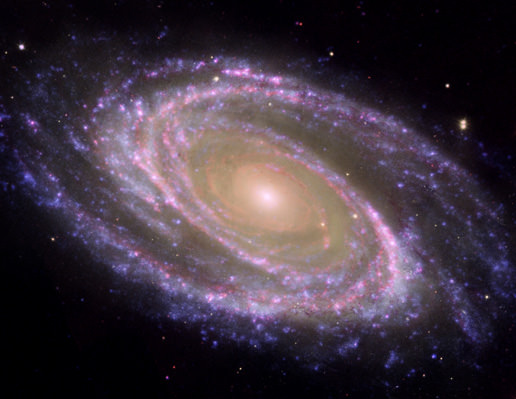[/caption]
If you haven’t yet succumbed to the temptation of Galaxy Zoo, a new add-on to the popular citizen scientist project just might catapult you into joining the thousands of people who are clicking and classifying. Galaxy Zoo has now teamed up with Microsoft’s World Wide Telescope to allow users to immerse themselves in the universe and be able to easily create videos and sky tours that can be customized and shared with friends and family. “Now there is an easy way to inflict your favorites on others,” said Galaxy Zoo team member Dr. Pamela Gay.
The new Sky Tour tool, available here was created by two of Gay’s students at Southern Illinois University Edwardsville, sophomores Jarod Luebbert and Mark Sands.
On Galaxy Zoo, the Zooites work with isolated images of galaxies to classify them by shape and other features. Coordinating with WWT allows users to see the galaxies in their home environments on the sky. “It’s so easy to classify a few hundred — or even a few thousand galaxies and think you’ve seen a reasonable chunk in the sky,” Gay told Universe Today. “But then you start looking at them in WWT and realize each galaxy is just a pinhead of light in a vast, vast sky. Jarod and Mark’s work really gives us a since of scale and how small we all are.”
To give you a taste of how this interface works, Luebbert and Sands created a great teaser video.
Galaxy Zoo – WorldWide Telescope Mashup! from Galaxy Zoo on Vimeo.
(The music on the video is great! Even though the video says “Starts Tomorrow,” tomorrow has now arrived, and the Sky Tour tool is available to use.)
GZ users need to classify at least 100 galaxies before the Sky Tour tool works with their “favorites.”
Tours can be created and customized with music, pictures, and logos. Other new features include sharing directly to networking sites, and competition with other Galaxy Zoo users.
But how do college students get a chance to work on a project with Microsoft and world class astronomers?
“We knew the job opportunity had become available that they wanted two teammates who would work well together for an excellent and educational project dealing with GalaxyZoo,” Sands told Universe Today. “Jarod and I being close friends, were encouraged to apply for this position by a fellow Zoo team member, Scott Miller. After being hired, we were accepted by the rest of the team and got right to work.”
Gay and Galaxy Zoo founder Chris Lintott presented the two students with a proposal they had sent to Microsoft explaining a very detailed approach to integrating Microsoft WorldWide Telescope with GalaxyZoo.
“The synopsis was simple, and we were to merge the creation of WorldWide Telescope tours with GalaxyZoo user favorites,” Sands said, “as well as implement a WordPress (a popular blogging software) plugin for educators to create WWT tours for podcasts (a project to be released in December). With no strict direction, Pamela allowed us to go wild and be creative with our own ideas.”
The two students began formulating ideas and creating dozens of mockups. Then in July, Sands and Luebbert found themselves arriving at Microsoft Research Building 99 in Redmond, WA collaborating directly with the architects of WorldWide Telescope.
Sands said WWT architect Jonathan Fay and Peter Turcan were readily available to help with the Galaxy Zoo project and were extremely helpful, as well as Kim Rush. Yan Xu from Microsoft worked directly with Gay and Lintott on the GalaxyZoo proposal.
“It was a blast to work with them and they helped us out a lot,” said Luebbert. “Even though the original idea came from Pamela and Chris, Mark and I added our own touches as we went along.”
“Working with Microsoft was an unimaginable experience,” Sands said. “There are some fantastic people who work there and deserve just as much attention as we do. I speak for both of us when I say we had a lot of fun working with them, even if it only lasted two weeks.”
The GZ/WWT integration has received great reviews from the users. “The ability of Galaxy Zoo’s volunteers to find interesting objects never ceases to amaze me,” said Lintott. “I’m looking forward to sitting back and enjoying their tours of the Universe.”
The citizen scientists of Galaxy Zoo have classified more than 100 million classifications galaxies since its launch in July 2007. Additionally, results from users have inspired more than 15 scientific papers to date.

